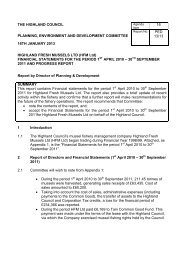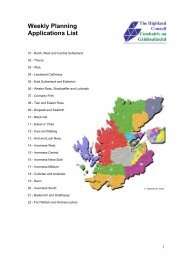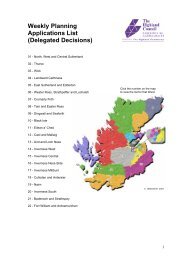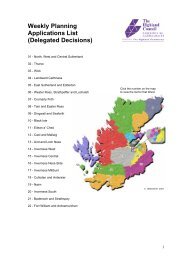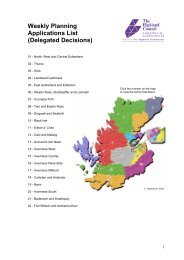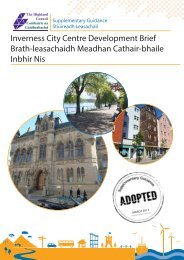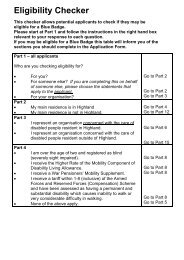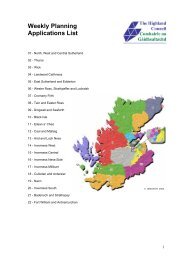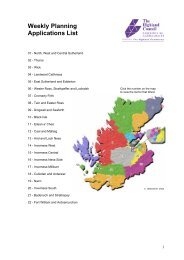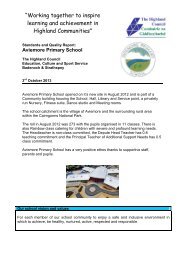A Single Strategy for Sensory Needs - The Highland Council
A Single Strategy for Sensory Needs - The Highland Council
A Single Strategy for Sensory Needs - The Highland Council
You also want an ePaper? Increase the reach of your titles
YUMPU automatically turns print PDFs into web optimized ePapers that Google loves.
<strong>The</strong> DDA and other initiatives are creating momentum towards the attitudinal and cultural shift that is necessary if meaningful<br />
improvements are to take place. When people do become “aware,” the shock realisation that often occurs can be a positive<br />
<strong>for</strong>ce <strong>for</strong> change.<br />
In many ways sensory services are only beginning to appear on the horizon.<br />
<strong>The</strong> main barriers to “Access” identified in this working group included:<br />
Access to Communication, Mobility and In<strong>for</strong>mation (CMI) support and services appropriate to the individual needs of people<br />
on the “<strong>Sensory</strong> Continuum”<br />
It was felt that these services are still at fairly fledgling levels, and that there is significant lack of infrastructure and resources<br />
locally and nationally to develop necessary improvements to make even “specialist” sensory services adequately accessible to<br />
people.<br />
It was felt that developing Best Practice Standards/Models within sensory services initially might be a useful way to lead the<br />
example to mainstream services.<br />
<strong>The</strong> aspiration is <strong>for</strong> individual CMI needs to be provided <strong>for</strong> in an “Equalities” context within all services and opportunities.<br />
Access to equitable services across <strong>Highland</strong> <strong>Council</strong><br />
Fundamentally it was felt that specialist services are not adequately resourced, though there is good joint working and there is<br />
a commitment to making best use of existing resources. However this commitment is significantly hampered by the thin spread<br />
of scarce resources.<br />
<strong>The</strong>re is a clear desire <strong>for</strong> specialist services to be easily accessible (irrespective of location), and models need to be developed<br />
to achieve appropriate balance.<br />
<strong>The</strong>re needs to be raised sensory awareness and provision within local communities, (raising of mainstream standards), whilst<br />
knowing when and where to access the specialists.<br />
Access to buildings in the sensory context is principally about a combination of people skills and the use of modern technology.<br />
30<br />
Complex <strong>Needs</strong> (Adults and Children)<br />
<strong>The</strong> term complex needs mean different things to different people at different stages of their lives. It is there<strong>for</strong>e very<br />
important to be clear as to who we are referring to within this strategy document when we describe someone as having<br />
complex support needs.



